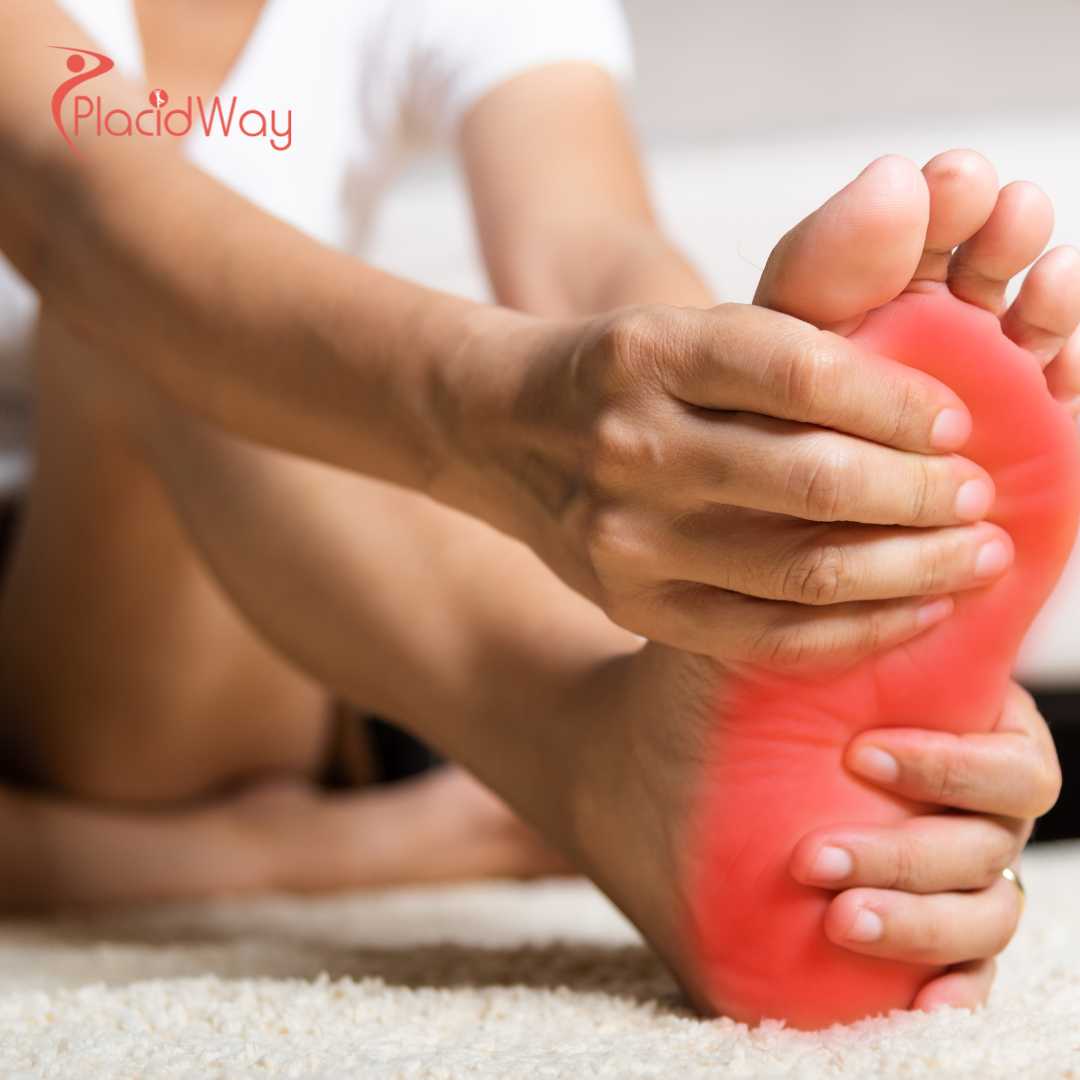
Get Back to Movement: Your Guide to Rotator Cuff Repair Abroad
Are you experiencing persistent shoulder pain, weakness, or difficulty lifting your arm? These could be signs of a rotator cuff tear, a common injury that impacts daily life and athletic performance. For many, a rotator cuff tear can significantly hinder their ability to work, play, and even perform simple tasks.
Rotator Cuff Repair is a vital surgical procedure designed to mend these damaged tendons, restoring strength, stability, and pain-free movement to your shoulder. If you've been recommended for this surgery, you're likely wondering about the best options available – from finding expert surgeons to managing costs and recovery.
In this comprehensive guide, we'll explore everything you need to know about Rotator Cuff Repair, including the procedure itself, recovery expectations, and why medical tourism is becoming an increasingly popular choice for patients worldwide. Discover how you can access world-class care, often at a fraction of the cost, by considering treatment abroad. Let's delve into how you can make an informed decision for your shoulder health and get back to living pain-free.
What is Rotator Cuff Repair and How Does it Help?
The rotator cuff is a group of four muscles and their tendons that surround the shoulder joint, providing stability and enabling a wide range of arm movements. Tears in these tendons can occur due to acute injury, such as a fall, or gradually over time from repetitive stress and degeneration. When a tear is significant, causing persistent pain, weakness, and limited motion, a doctor may recommend Rotator Cuff Repair.
The primary goal of this surgery is to reattach the torn tendon back to the head of the humerus (upper arm bone). By doing so, the procedure aims to alleviate pain, restore the shoulder's strength and range of motion, and prevent further damage. Successful repair allows patients to regain function and return to their normal activities, enhancing their quality of life.
When is Rotator Cuff Repair Necessary?
Not every rotator cuff tear requires surgery. Many minor tears and injuries can be managed effectively with conservative treatments. However, surgery becomes a strong consideration in several scenarios:
- Significant Pain and Weakness: If conservative treatments (rest, ice, physical therapy, pain medication, steroid injections) haven't provided adequate relief after several months.
- Acute, Traumatic Tears: Tears that result from a sudden injury, especially in younger individuals, often benefit from early surgical intervention to prevent muscle retraction and chronic weakness.
- Large Tears (Greater than 3 cm): Larger tears are less likely to heal on their own and can worsen over time.
- Activity-Limiting Symptoms: When the tear significantly interferes with daily activities, work, or sports.
- Progressive Weakness: If the tear is getting larger or causing increasing weakness.
Your doctor will evaluate the size and type of your tear, your age, activity level, and overall health to determine if you are a suitable candidate for Rotator Cuff Repair.
What are the Different Types of Rotator Cuff Repair Procedures?
There are several surgical approaches for Rotator Cuff Repair, and the choice depends on the size and location of the tear, the surgeon's expertise, and patient factors:
-
Arthroscopic Repair:
- This is the most common and least invasive technique.
- The surgeon makes several small incisions (about a centimeter each) around the shoulder.
- An arthroscope (a small camera) is inserted into one incision, projecting images onto a monitor, guiding the surgeon.
- Tiny instruments are inserted through other incisions to remove damaged tissue, smooth bone spurs, and reattach the torn tendon to the bone using sutures and anchors.
- Benefits: Less pain, smaller scars, faster initial recovery, reduced infection risk.
-
Open Repair:
- This traditional method involves a larger incision (several centimeters) over the shoulder.
- The surgeon directly visualizes the tear and repairs it.
- Sometimes, a deltoid muscle must be detached and then reattached to access the rotator cuff.
- Benefits: Allows for direct visualization and repair of complex tears; sometimes preferred for very large or complex tears.
-
Mini-Open Repair:
- A hybrid approach combining aspects of both arthroscopic and open surgery.
- The surgeon uses an arthroscope to examine the joint and prepare the area, addressing any bone spurs or other issues.
- Then, a small incision (about 3-5 cm) is made to directly repair the tendon, often without detaching the deltoid muscle.
- Benefits: Less invasive than open surgery but offers direct visual and tactile feedback for the repair, which some surgeons prefer for certain tears.
The best approach for your specific tear will be discussed with you by your orthopedic surgeon, weighing the benefits and considerations of each method.
What Does the Rotator Cuff Repair Recovery Process Involve?
Recovery after Rotator Cuff Repair is a gradual process that requires patience and commitment to physical therapy. It can typically span 6 to 12 months, sometimes longer, depending on the tear's size, the repair's complexity, and individual healing factors. The recovery is usually divided into several phases:
-
Phase 1: Immobilization (0-6 weeks):
- Your arm will be in a sling to protect the repair and prevent movement.
- You'll likely have restrictions on lifting, pushing, or pulling.
- Passive range of motion exercises might begin under supervision, where a therapist moves your arm without you using your muscles.
-
Phase 2: Passive & Active Assisted Motion (6-12 weeks):
- The sling may be discontinued.
- Physical therapy progresses to include gentle active exercises where you start to move your arm yourself, though still with assistance.
- The goal is to regain full range of motion without stressing the healing tendon.
-
Phase 3: Strengthening (3-6 months):
- Once adequate motion is achieved, strengthening exercises are introduced.
- These exercises gradually rebuild the strength of the rotator cuff and surrounding muscles.
- Care must be taken to avoid overstressing the healing tissue.
-
Phase 4: Return to Activity (6-12+ months):
- Sport-specific or work-specific activities are gradually introduced.
- Full return to overhead sports or heavy lifting typically takes 9-12 months, sometimes longer.
Adherence to your physical therapy program is paramount for a successful outcome. Skipping sessions or overdoing it too soon can compromise the repair.
Why Consider Medical Tourism for Rotator Cuff Repair?
The decision to travel abroad for medical treatment, known as medical tourism, is increasingly popular for procedures like Rotator Cuff Repair. Patients often look beyond their borders for several compelling reasons:
- Cost Savings: This is often the primary driver. The cost of rotator cuff surgery can be significantly lower in many countries compared to Western nations, even when factoring in travel and accommodation.
- Access to Specialized Care: Some countries boast highly renowned orthopedic surgeons and clinics specializing in shoulder surgery, offering expertise that might be difficult to access locally due to wait lists or limited options.
- Reduced Wait Times: In healthcare systems with long waiting lists, medical tourism can provide immediate access to necessary surgery, preventing further deterioration of the condition.
- State-of-the-Art Facilities: Many international hospitals catering to medical tourists offer modern equipment, advanced surgical techniques, and excellent patient care standards.
- Privacy and Anonymity: For some, undergoing treatment away from home offers a greater sense of privacy.
For individuals facing a potentially debilitating rotator cuff tear, exploring medical tourism can open doors to quality, affordable care that might otherwise be out of reach.
How Much Does Rotator Cuff Repair Cost Worldwide?
The cost of Rotator Cuff Repair can be a major factor in a patient's decision-making process. Prices can fluctuate wildly based on the country, the clinic's reputation, the surgeon's fees, the type of procedure (arthroscopic vs. open), and whether it includes pre-operative tests, hospital stay, anesthesia, and post-operative physical therapy. Here's an estimated comparison of Rotator Cuff Repair costs in various countries:
| Country | Estimated Cost (USD) | Key Advantages for Medical Tourists |
|---|---|---|
| United States | $15,000 - $35,000+ | Advanced technology, highly trained surgeons, but high costs. |
| Mexico | $5,000 - $12,000 | Proximity for North Americans, affordable prices, reputable facilities in border cities. |
| Costa Rica | $6,000 - $13,000 | High-quality care, beautiful recovery environment, popular for dental and orthopedic procedures. |
| India | $4,000 - $10,000 | Very low costs, internationally accredited hospitals, English-speaking staff. |
| Thailand | $6,000 - $15,000 | Excellent medical facilities, strong hospitality, combined with a vacation experience. |
| Turkey | $5,000 - $11,000 | Modern hospitals, experienced surgeons, strategic location for European and Middle Eastern patients. |
These figures are estimates and can vary based on specific circumstances. It's crucial to get a personalized quote that details all included services when planning your medical journey.
How Do I Choose the Best Medical Tourism Destination for Rotator Cuff Surgery?
Selecting the right destination is a critical step. It requires careful research and consideration of several factors:
- Accreditation and Standards: Look for hospitals accredited by international bodies like Joint Commission International (JCI) or other recognized global standards. This ensures adherence to high-quality patient care and safety protocols.
- Surgeon Qualifications and Experience: Research the surgeon's background, certifications, experience with rotator cuff repairs, and patient testimonials. Are they board-certified in their home country? How many similar procedures have they performed?
- Cost vs. Quality: While cost savings are a draw, never compromise on quality. Seek a balance where you receive excellent care at an affordable price. Request detailed quotes that outline everything included.
- Language and Communication: Ensure there are clear communication channels. Many international hospitals catering to medical tourists have English-speaking staff, but it’s vital to confirm this for your specific medical team.
- Logistics and Travel: Consider visa requirements, flight accessibility, local transportation, and accommodation options for yourself and any accompanying companions. How long will you need to stay for follow-up care?
- Post-Operative Care and Physical Therapy: Understand how post-operative care and physical therapy will be managed, both abroad and upon your return home. Will your local therapist be able to coordinate with the overseas team?
Platforms like PlacidWay specialize in connecting patients with reputable international providers and can help navigate these complex decisions.
What Are the Benefits of Opting for Medical Tourism for This Procedure?
Beyond the potential for cost savings, medical tourism for Rotator Cuff Repair presents several distinct advantages:
- Access to Innovation: Some leading international clinics are at the forefront of medical advancements, offering the latest surgical techniques and technologies that might not be readily available or affordable in your home country.
- Personalized Care: In many medical tourism destinations, hospitals prioritize patient experience, offering highly personalized care, attentive staff, and luxurious recovery suites that enhance comfort during healing.
- Privacy and Reduced Stigma: For some individuals, undergoing surgery away from their social circles provides a sense of privacy and allows them to focus solely on recovery without external pressures.
- Opportunity for Travel and Recovery: Combining a medical procedure with a travel experience can make the recovery process feel less clinical. Patients often appreciate the chance to recuperate in a new, relaxing environment, turning a potentially stressful event into a more positive experience. Imagine recovering on a beautiful coastline!
These combined benefits contribute to a holistic healing journey, often leading to higher patient satisfaction.
What Should I Prepare For When Planning Medical Travel for Rotator Cuff Repair?
Successful medical travel for Rotator Cuff Repair hinges on meticulous planning. Here’s a checklist to guide your preparations:
- Medical Records: Compile all relevant medical documents, including imaging (MRI scans), diagnostic reports, physician's notes, and a summary of your current health status. Have them translated into English if necessary, and ensure they are easily shareable with your international medical team.
- Travel Documents: Check passport validity, visa requirements for your chosen destination, and any necessary travel permits.
- Accommodation and Transportation: Arrange for suitable accommodation near the hospital for your stay, especially for post-operative recovery. Plan for airport transfers and local transportation, considering you might have limited arm movement initially.
- Finances: Understand the full cost of the procedure, travel, accommodation, and living expenses. Ensure you have access to funds and consider travel insurance that covers medical emergencies abroad.
- Companion: Strongly consider traveling with a companion who can assist you during your recovery, especially immediately after surgery when your mobility might be significantly restricted.
- Communication Plan: Establish how you'll communicate with your family and local doctors, especially regarding post-operative instructions.
- Post-Op Care at Home: Discuss with your local doctor and physical therapist how they will manage your recovery upon your return. Ensure a smooth transition of care.
A well-prepared patient experiences less stress and has a smoother recovery journey.
Is Medical Tourism a Safe Option for Rotator Cuff Surgery?
The safety of medical tourism is a common concern, and rightly so. While there are risks associated with any medical procedure or travel, proper research and planning can make medical tourism a very safe and successful option for Rotator Cuff Repair.
Key factors contributing to safety include:
- Choosing Accredited Facilities: Opt for hospitals and clinics that hold international accreditations (like JCI) or are recognized by reputable global healthcare organizations. These accreditations signify adherence to strict quality and safety standards.
- Verifying Surgeon Credentials: Ensure your surgeon is highly qualified, board-certified, and has extensive experience in rotator cuff repair. Don't hesitate to ask for their CV and patient testimonials.
- Utilizing Reputable Facilitators: Companies like PlacidWay specialize in vetting international providers and ensuring high standards of care. They can guide you to trusted facilities and help with coordination, reducing uncertainties.
- Clear Communication: Ensure all medical information is clearly communicated between you, your home doctor, and the international medical team. Language barriers can be a source of error.
- Understanding Local Healthcare Standards: While many countries offer world-class care, understanding the local healthcare infrastructure and emergency services is also important.
By being a proactive and informed patient, you can significantly mitigate potential risks and ensure a safe and effective surgical experience abroad.
What Qualifications Should I Look for in a Surgeon Abroad?
The surgeon's expertise is paramount to a successful Rotator Cuff Repair. When evaluating potential surgeons abroad, look for the following qualifications:
- Board Certification: Ensure the surgeon is board-certified in orthopedic surgery by a recognized national or international board in their home country. This confirms they've met rigorous standards of education, training, and examination.
- Specialization and Experience: Look for a surgeon who specializes in shoulder and upper extremity surgery, with a significant number of successful rotator cuff repairs performed, especially using the technique recommended for you (e.g., arthroscopic).
- International Professional Memberships: Membership in organizations like the American Academy of Orthopaedic Surgeons (AAOS), European Society for Sports Traumatology, Knee Surgery & Arthroscopy (ESSKA), or local equivalents demonstrates a commitment to professional development and adherence to best practices.
- Facility Affiliation: Ensure the surgeon is affiliated with internationally accredited hospitals or clinics known for their orthopedic departments.
- Publications and Research: While not always necessary, a surgeon involved in research or published works in their field often indicates a higher level of expertise and engagement with medical advancements.
- Patient Testimonials and Outcomes: Seek out patient reviews and, if possible, ask for outcome data for their rotator cuff repair patients.
- Communication Skills: It's vital that the surgeon and their team can communicate clearly with you in English (or your preferred language) and answer all your questions thoroughly.
Don't hesitate to ask for a virtual consultation to discuss your case directly with the surgeon before making a decision.
What are the Potential Risks of Rotator Cuff Repair?
While Rotator Cuff Repair is generally a safe and effective procedure, it's important to be aware of the potential risks, which are common to most surgeries:
- Infection: Though sterile techniques are used, any surgery carries a small risk of infection at the surgical site.
- Bleeding: Minor bleeding is normal, but excessive bleeding can occur.
- Nerve or Blood Vessel Damage: There's a slight risk of damage to nerves or blood vessels around the shoulder during the procedure.
- Anesthesia Complications: Reactions to anesthesia, though rare, can occur.
- Blood Clots: Deep vein thrombosis (DVT) in the leg or pulmonary embolism (blood clot in the lung) are rare but serious risks.
- Shoulder Stiffness (Frozen Shoulder): Some patients may develop stiffness despite physical therapy, which might require further treatment.
- Continued Pain: While the goal is pain relief, some patients may experience residual pain.
- Failure of the Repair (Re-tear): The tendon may fail to heal or re-tear, especially in older patients, those with very large tears, or those who do not adhere to post-operative restrictions. Smoking and certain medical conditions can also increase this risk.
- Implant-related Issues: Issues with surgical anchors or sutures are rare but possible.
Your surgeon will discuss these risks with you in detail, helping you understand the likelihood and how they are managed. Adhering to pre- and post-operative instructions is crucial for minimizing these risks.
Take the Next Step with PlacidWay
Ready to regain full function and live pain-free? Your journey to a stronger, healthier shoulder is within reach. Explore top-rated international clinics, compare prices, and get a free, personalized quote for your Rotator Cuff Repair with PlacidWay. Let us help you plan a seamless and successful medical travel experience. Start your transformation today!
Orthopedic Surgery Abroad, Knee Sugery Abroad










Share this listing